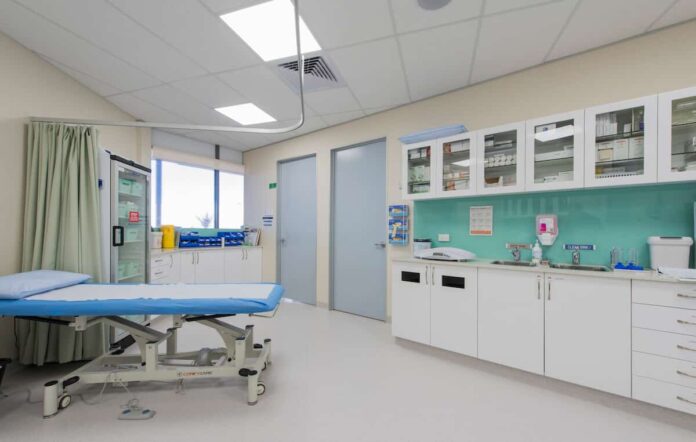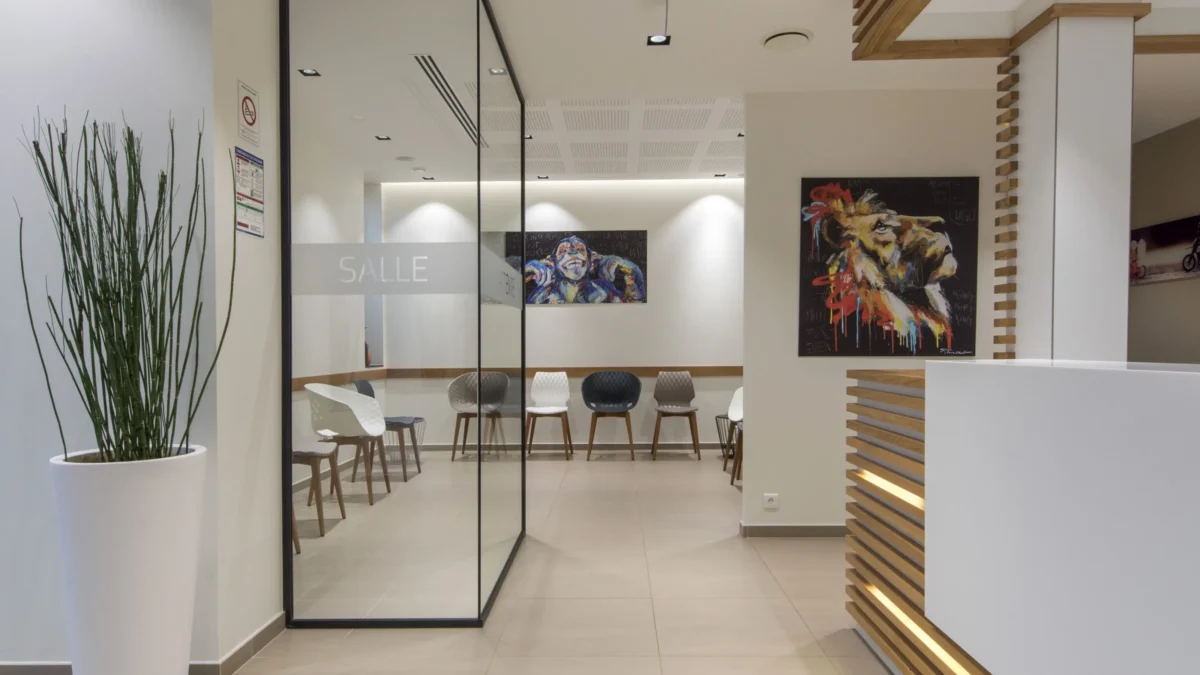
Patient flow refers to how patients move through a healthcare facility, from their entry point to the conclusion of their visit. Effective patient flow is a major aspect of a well-functioning medical office. It impacts operational efficiency, staff performance, patient satisfaction, and ultimately, the overall quality of healthcare provided. Poor patient flow can lead to long wait times, patient discomfort, and increased stress for both patients and healthcare staff. These factors not only affect the patient’s experience but can also hinder the facility’s ability to provide timely, quality care.
This article is designed to provide a thorough guide to strategically planning patient flow when renting a medical office. This article focuses on the importance of understanding patient flow, key factors to consider when choosing a medical office, and practical tips for optimizing your office layout. We aim to enable healthcare providers to create an environment that facilitates smooth operations and promotes a positive patient experience.
The Importance of Patient Flow
The term “patient flow” is used to describe the movement of patients through a healthcare facility from the point of entry to exit. It encompasses every touchpoint, including arrival, registration, wait times, interactions with medical staff, treatment or procedure, and discharge. An efficiently designed patient flow ensures each process is seamless, eliminating unnecessary waiting times and enhancing the overall patient experience.
When searching for a medical office for rent, effective patient flow is incredibly important, as it directly affects operational efficiency and staff productivity. It aids in minimizing congestion, reducing waiting times, and facilitating quicker decision-making. It leads to enhanced privacy and confidentiality, which are key elements in healthcare and should be of top priority. Improved patient flow positively impacts patient satisfaction by making their experience in the facility more comfortable and less stressful. It also tangentially affects overall healthcare delivery by allowing for more patients to be treated without compromising the quality of care, thus enhancing service delivery and the reputation of the healthcare facility.
Factors to Consider When Renting a Medical Office

When planning to rent a medical office, consider the location and its accessibility. The office should ideally be in a location that is easy for patients, staff, and suppliers to reach, preferably with good public transport links and ample parking. Proximity to other medical services and amenities such as pharmacies can also be beneficial. The size of the office plays a significant role in handling patient flow efficiently. The office should have adequate space to accommodate waiting areas, consultation rooms, examination rooms, and administrative areas.
Another important factor when renting a medical office is the arrangement of rooms and the potential for customizing the layout. The office should allow for a logical progression from check-in to waiting area, service areas, and finally, check-out. If necessary, you should confirm with the landlord about the possibility of modifying the layout to better facilitate patient flow. Lastly, ensure that the office complies with all relevant healthcare regulations and guidelines. This includes aspects such as accessibility options for disabled individuals, fire safety measures, and cleanliness, among others. These factors can greatly influence patient perception and comfort, making a difference in the overall success of your medical practice.
Tips on Strategically Planning Your Office Layout

An efficient office layout should consider every step of the patient’s experience from registration to exit. Areas for service including registration, waiting, consultation, and exit should follow a logical progression, minimizing the patients’ need to retrace their steps. By creating separate, discrete areas for confidential discussions ensures that sensitive matters can be discussed without fear of being overheard. Implementing a decentralized nursing station can also maintain privacy while allowing staff to monitor patients effectively.
Optimizing space involves not only the strategic placement of each room but also the consideration of corridors, which should be wide enough to accommodate traffic but not so spacious as to waste valuable space. Thinking about the placement of furniture, equipment, and any necessary queueing areas ensures smooth patient flow. Lastly, enhancing the comfort for patients should be prioritized in the waiting area design. This could include providing adequate seating, adding soothing aesthetics like an aquarium or peaceful wall art, ensuring cleanliness, controlling the temperature, providing reading materials, and perhaps even a small play area for children. These elements can turn wait times into more pleasant, less stressful experiences for patients.
Potential Challenges in Planning Patient Flow

Planning patient flow in a medical office can be loaded with challenges, with the most glaring one being managing high patient volume periods. Unexpected surges can lead to congestion in waiting areas and longer wait times, which could result in patient dissatisfaction and stress among medical staff. Further, differences in service times, with some patients requiring more time than others due to the nature of their health concerns, can lead to delays and disrupt the flow.
To manage high patient volume periods effectively, it’s advisable to use a well-planned appointment scheduling system. Consider staggering arrival times to avoid congestion and deal with non-urgent appointments during off-peak hours. Digital patient check-in systems can also be employed to speed up the registration process. For differences in service times, having buffer slots in the schedule can allow for any unforeseen delays without affecting other patients. Encouraging your staff to work as a cohesive team, openly communicating, and properly training them in managing patient flow can prove decisive in overcoming these challenges.
Effectively planning patient flow is a major aspect of running a successful medical office. By considering factors such as office location and size, room arrangement, and adherence to healthcare regulations when renting, along with strategically planning your office layout, you can significantly enhance patient satisfaction and overall healthcare delivery. By anticipating and adequately addressing potential challenges, you set your practice up for seamless operation and heightened patient engagement.








